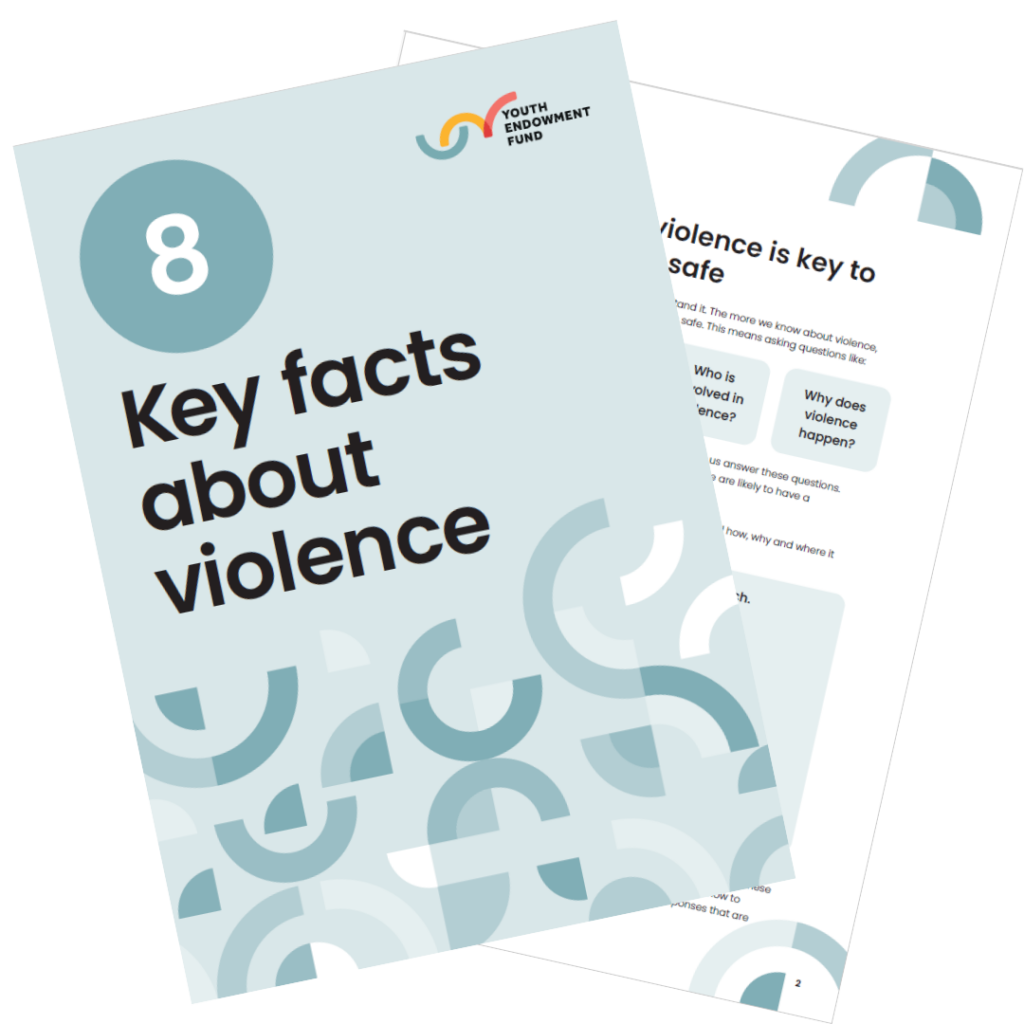
Key Facts About Violence

Key Facts About Violence
For example, in one study 1% of the total population accounted for 63% of all convictions for violence. Amongst those who commit any crime, offending is further concentrated within a smaller group of people who’ve committed many offences. A large amount of the violence that happens is carried out by a subset of people who commit many offences.
We know a lot about the common characteristics of people involved in violent crime. They are overwhelmingly likely to be male. They are also more likely to have experienced extremely challenging and traumatic situations. This could include being a victim of violence themselves, experience of the care system, or criminal exploitation. Research suggests that people do not tend to specialise much in one type of offending – people who commit the largest number of violent offences are also likely to be committing other offences too.
If a small group of people commit a large proportion of violence, we should identify them and support them to stop. Unless this happens, some of them will continue to cause harm. Learning more about the backgrounds of people involved in violence often reveals that they face difficult circumstances and decisions. Supporting them to desist will involve addressing these challenges and meeting their needs.
The YEF has invested in further development and testing of an approach called focused deterrence. Focused deterrence recognises that most serious violence is associated with a small group of people who are themselves very likely to be victims of violence, trauma, and extremely challenging circumstances. It attempts to identify these people and support them to desist through a combination of positive support, community engagement and deterrence. YEF is testing the impact of focused deterrence through a randomised control trial in five English cities.

“People referred to the Phoenix Programme must be involved or associated with a group committing or driving serious violence. So things such as drug trafficking or offences involving weapons. Often, they’d be part of the same friendship groups or live in the same area.
“I wouldn’t say this group is hard to reach, it’s more that certain organisations don’t know how to adapt their methods to suit the needs of the people using their services. As a Community Navigator, I wasn’t associated with any statutory organisation. Sometimes we’d go to a first meeting and they would be absolutely fine talking to me because I didn’t represent what they saw as “the enemy” – the council, the police or probation. They’d often see these statutory organisations as people who they couldn’t trust or people who had failed them in the past, so didn’t see any point in engaging with them.
“I think this is why so many services struggle – because people’s attitudes and beliefs are so ingrained. It’s something that you can’t necessarily measure and it takes a long time to change. It needs strong relationships with people who look like the service users, who talk like the service users – people who they think they can trust from the get-go.”
Get your copy of our latest research resource on the key facts about violence.

